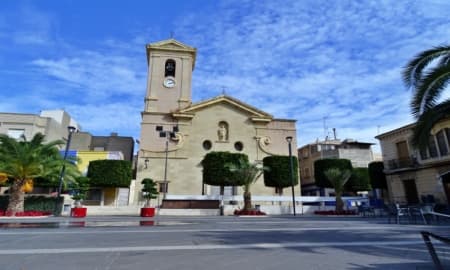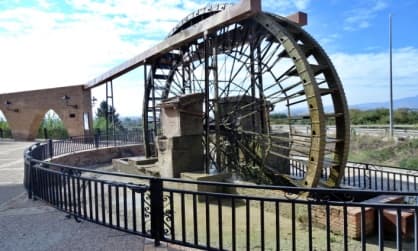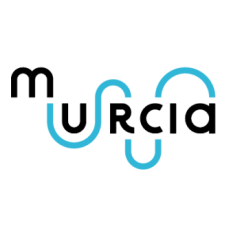
What to see in Lorqui
Saint James the Great Parish Church

The temple’s construction began in 1765, but due to economic hardships, the completion of the work was delayed until 1799. However, due to the French invasions and the wars for the independence of the American colonies, the church could not be inaugurated until 1827.
The work was finished by the master Pedro Gilabert, who took care of the completion of the tower. Throughout history, the tower had to be repaired on several occasions, as it suffered the consequences of earthquakes.
The work was finished by the master Pedro Gilabert, who took care of the completion of the tower. Throughout history, the tower had to be repaired on several occasions, as it suffered the consequences of earthquakes.
The last major restoration carried out in the Parish Church of Saint James the Great was in 1992.
The Water Wheels

In Lorqui, it is still possible to see two of the twelve water wheels that came to exist in the town. One of them is located in the city centre, at the end of Water Wheel Street. This is what those who enter the town from Archena will see.
The other is known as the Water Wheel of Lorqui or the Water Wheel of “Tío Rapao”, as its caretaker of many years was nicknamed. This second water wheel is located between the vestiges of the last orchards of the municipality and the road that surrounds the city.
The other is known as the Water Wheel of Lorqui or the Water Wheel of “Tío Rapao”, as its caretaker of many years was nicknamed. This second water wheel is located between the vestiges of the last orchards of the municipality and the road that surrounds the city.
Don Juan de la Cierva Palace

This palace was owned by Don Juan de la Cierva Peñafiel, who served as Minister and President of the Government during the reign of Alfonso XIII. The building was built around 1915, serving as an occasional residence for the Don Juan family.
The railway connecting Murcia with Caravaca was traced between the walls of the palace. It is considered an example of the style that prevailed in the stately buildings of the first decades of the 20th century.
The railway connecting Murcia with Caravaca was traced between the walls of the palace. It is considered an example of the style that prevailed in the stately buildings of the first decades of the 20th century.
Its owner, Don Juan de la Cierva Peñafiel, was surprised in Madrid by the outbreak of the Spanish Civil War. To save his life, he took refuge in the Norwegian Embassy, where, due to the shortage of medicines and to the privations produced by the war, his health was affected. He died on January 11, 1938.
Canning Chimneys
In the past, Lorqui was an important canning production centre. As evidence of that industry, which was the economic centre of the town during the 20th century, today you can find five chimneys that belonged to the old factories. Three are located within the urban area.
All have a simple style, characteristic of their industrial function. They were built of brick and their decoration has a certain neo-Mudejar style.
All have a simple style, characteristic of their industrial function. They were built of brick and their decoration has a certain neo-Mudejar style.
Cave Houses

Thanks to its unique orography, Lorqui is one of the towns with the largest number of cave houses in the entire region of Murcia. It is possible to find them all over the old town.
Many are hidden behind modern facades and patios, which completed the way of life in this type of construction.
These cave houses usually have a central space that articulates the distribution of their different rooms. The vaulted ceilings reach up to four meters high in some cases.
Many are hidden behind modern facades and patios, which completed the way of life in this type of construction.
These cave houses usually have a central space that articulates the distribution of their different rooms. The vaulted ceilings reach up to four meters high in some cases.
Some of the cave houses have been remodelled and turned into museums, so it is possible to visit them and, thus, know what life was like inside these particular constructions. An example of this is the cave of the “Los Tablachos” family, located on Altos Moros Street.
What to see in the Vega Media del Segura











